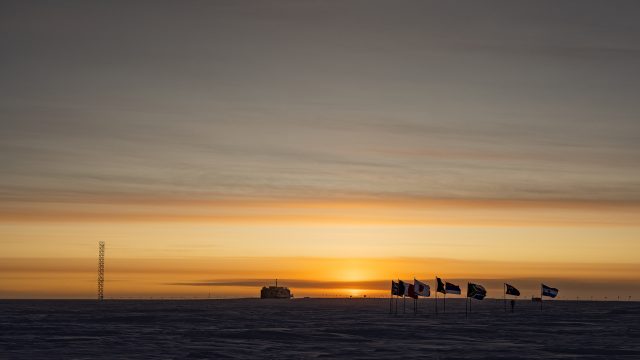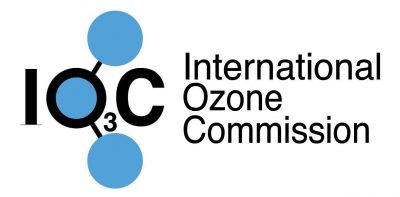By Patrick Cullis, CIRES and NOAA scientist As we track this year’s formation of the annual ozone hole above Antarctica, join Casper and Peggy in this four-part animated series as they explore our atmosphere and learn about the important role ozone plays in protecting all life on Earth. Part 1 covers ozone in the atmosphere… Read More
By Patrick Cullis, CIRES and NOAA scientist After six straight months of darkness, the Sun has finally returned to the sky above the Amundsen-Scott South Pole Station. NOAA scientists working at the station and collecting air samples at the Atmospheric Research Observatory (ARO) experience only one sunrise and one sunset per year due to the unique… Read More
By Irina Petropavlovskikh, Secretary of the International Ozone Commission and a CIRES and NOAA scientist September 16 is the International Day for the Preservation of the Ozone Layer, celebrating the 35th signing anniversary of the 1987 Montreal Protocol treaty on Substances that Deplete the Ozone Layer. We would like to report success in the reduction of the ozone-depleting… Read More
By NOAA Communications The 2021 Antarctic ozone hole reached its maximum area on October 7 and ranks 13th largest since 1979, scientists from NOAA and NASA reported today. This year’s ozone hole developed similarly to last year’s: A colder-than-usual Southern Hemisphere winter led to a deep and larger-than-average hole that will likely persist into November… Read More
by Irina Petropavlovskikh, CIRES and NOAA scientist and Christine Smith, NOAA/GML Field Operations Manager Scientists and engineers at NOAA’s South Pole Observatory collect stratospheric ozone observations there all year round, but they launch ozonesonde instruments most frequently during the ozone depletion period (every September–October) to capture the rapid decline in stratospheric ozone at the South Pole. Ozone… Read More
By Patrick Cullis and Irina Petropavlovskikh, CIRES and NOAA scientists Meteorological conditions (speed of the winds, temperatures, and planetary wave activities) determine the size and year-to-year variability of ozone depletion. Because meteorological conditions this year are similar to last year, (no surprise) we’re seeing similar depletion in stratospheric ozone. It’s important to note that the… Read More
By Irina Petropavlovskikh, CIRES and NOAA scientist The beginning of October is showing low ozone values over Antarctica, including the South Pole. This rapid ozone depletion has been ongoing through September, as seen in the time plots for total ozone and stratospheric ozone columns from ozonesonde records at the South Pole. Stratospheric temperatures are still… Read More
By Patrick Cullis, CIRES and NOAA scientist The 2021 Antarctic ozone hole is taking shape as we move into the ozone depletion season. Stratospheric temperatures are frigid and the Sun is activating chlorine, beginning a catalytic reaction in which a single chlorine molecule will destroy thousands of ozone molecules, while South Pole ozonesonde measurements show… Read More
By Irina Petropavlovskikh, Secretary of the International Ozone Commission and a CIRES and NOAA scientist September 16 is the International Day for the Preservation of the Ozone Layer, celebrating the 1987 anniversary of the Montreal Protocol on Substances that Deplete the Ozone Layer. The Montreal Protocol is the globally ratified treaty that controls the production… Read More
As the frigid “Polar Vortex” remains surprisingly stable and centered over Antarctica, NOAA researchers stationed at the Amundsen-Scott South Pole Station continue monitoring the “Ozone Hole” situated overhead. Continued vortex stability means that fresh air from the mid-latitudes has yet to break through this atmospheric barrier and fill in the annual depletion event. Balloons launched… Read More






